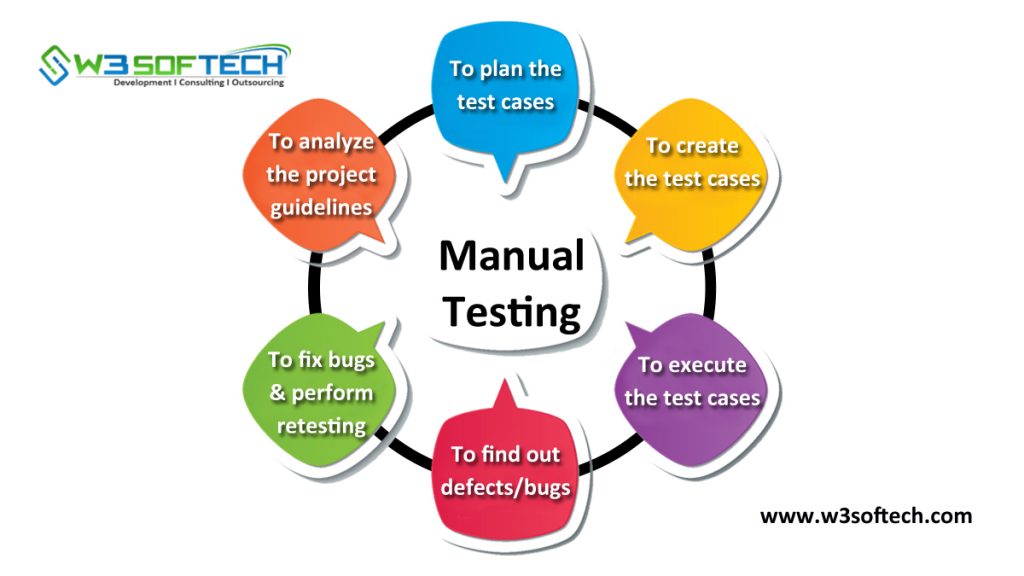Manual Testing is a type of software testing usually done by testers manually to perform test cases and find out the bugs or errors in a software system. Any software application before going under automation testing must be tested manually.
The major role of this testing is to ensure that the system is defect-free and working properly then let it go for the next step in the development life cycle. Name itself says that this testing is done by manually without using any automation tools.
Working Process of Manual Testing:
- The initial step is to study and analyze completely the project give
- To execute the test cases based upon the business requirements
- Perform testing manually to find out any bugs or defects in the software application and fix them
- Perform retesting by testers to find out any missing bugs in the system and fix them
- Finally, the project will go for the further step after successful completion of testing

Advantages of Manual Testing:
- This Testing can be done through either functional or non-functional
- Any kind of software application or system can be tested manually
Disadvantages of Manual Testing:
- It requires human intervention
- It requires highly skilled testers and longtime process
- Based upon the above things it costs high
- The testing process will become repetitive so that may get boring
Manual Testing Types:
Depending on the system functionality and usage software testing will execute either through manually or automatically.

Manual Testing Tools:
- Appium (Mobile Testing)
- AutoIT (Language Automation)
- Bugzilla (Defect Tracking & Collaboration)
- FileZilla (FTP Solution)
- Firebug / Firepath (Online Debugging)
- GitHub (Project & Source Code Hosting)
- Jenkins (Continuous Testing)
- JMeter (Load Testing)
- Mantis (Bug-Tracking & Project Management)
- Notepad++ (Source code Editor)
- PhantomJS (Headless Browser)
- Postman (API Testing)
- RazorSQL (Database Query Tool)
- Selenium (Web Application Testing)
- TestLink (Test Management)
- UI Automator (Android Testing Framework)
11 thoughts on “What is Manual Testing? Types, Tools and Concept | W3Softech”
Comments are closed.